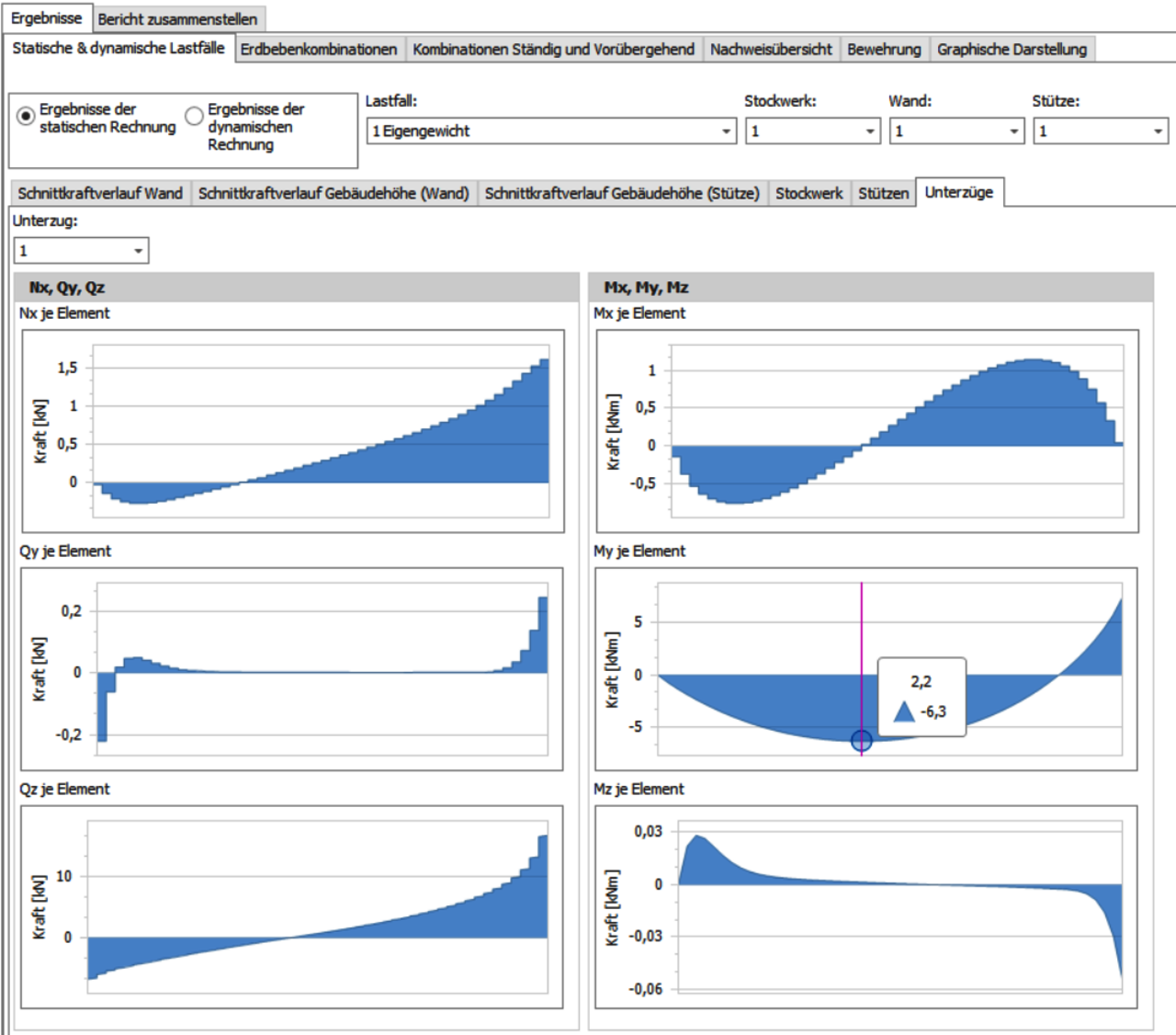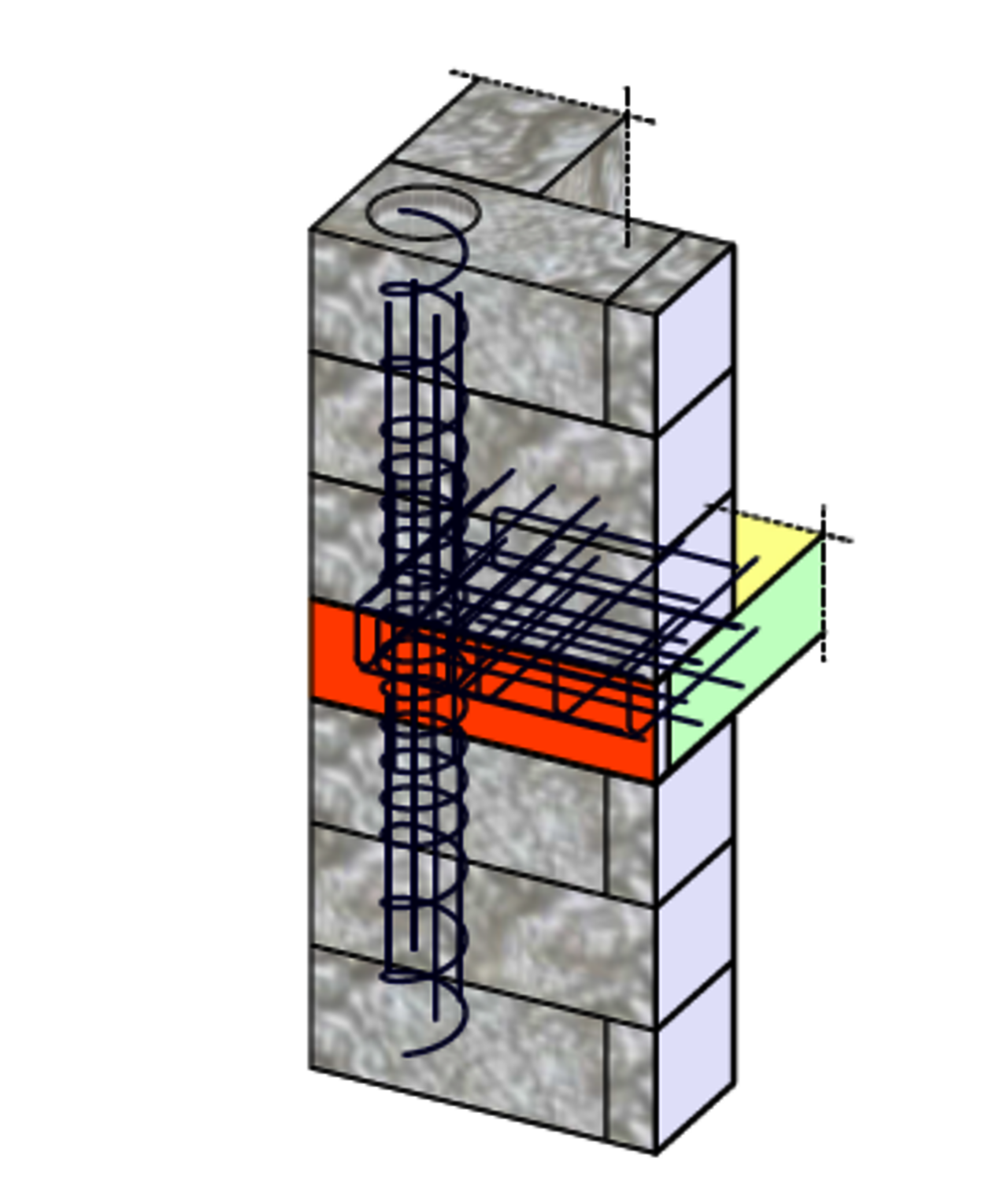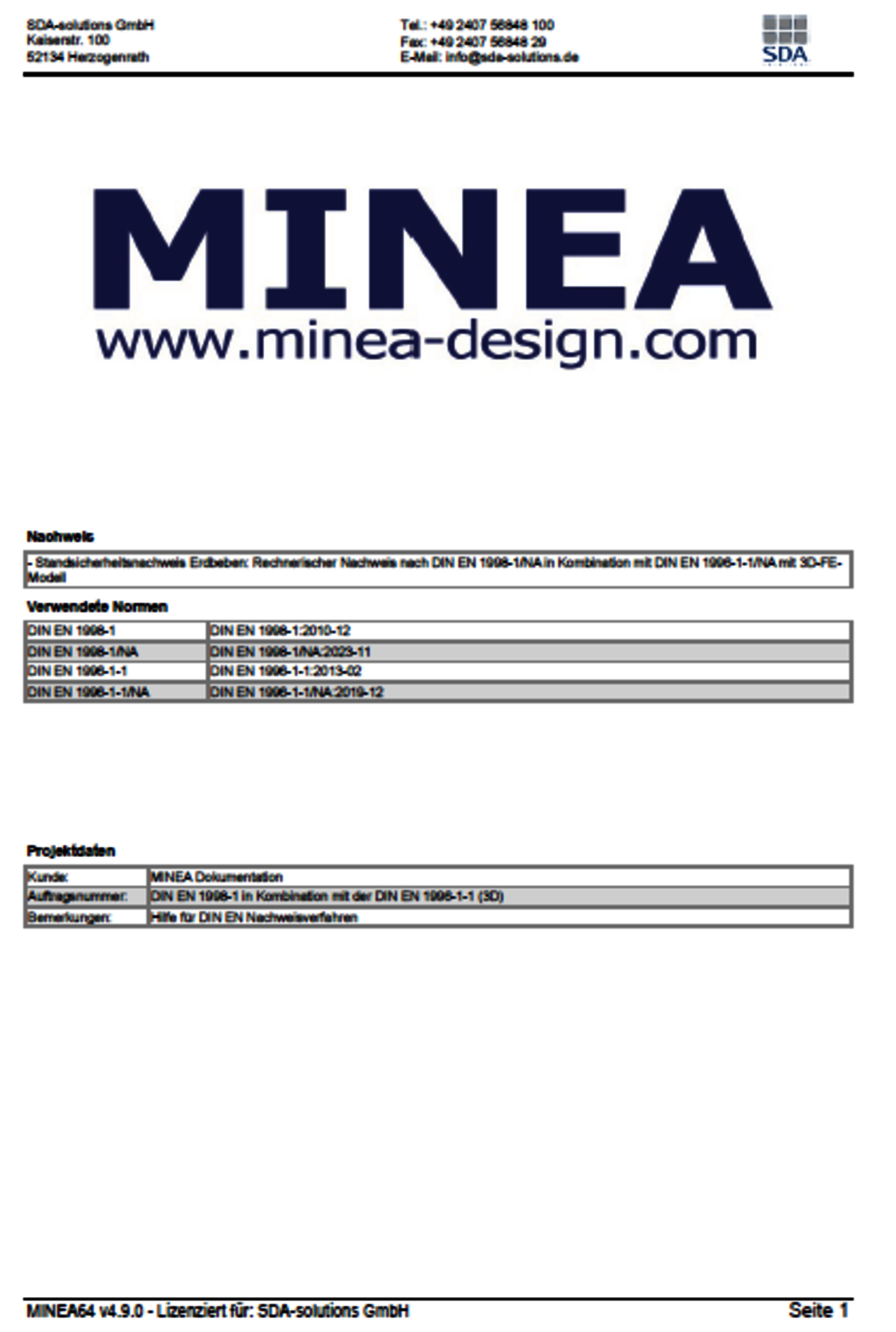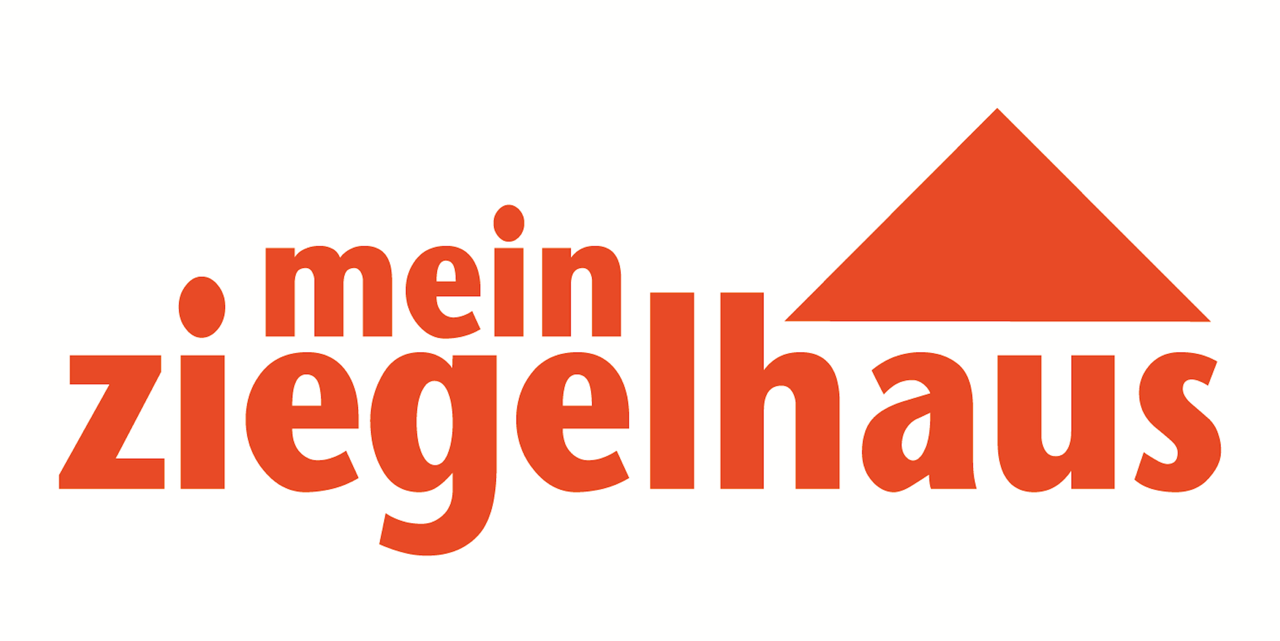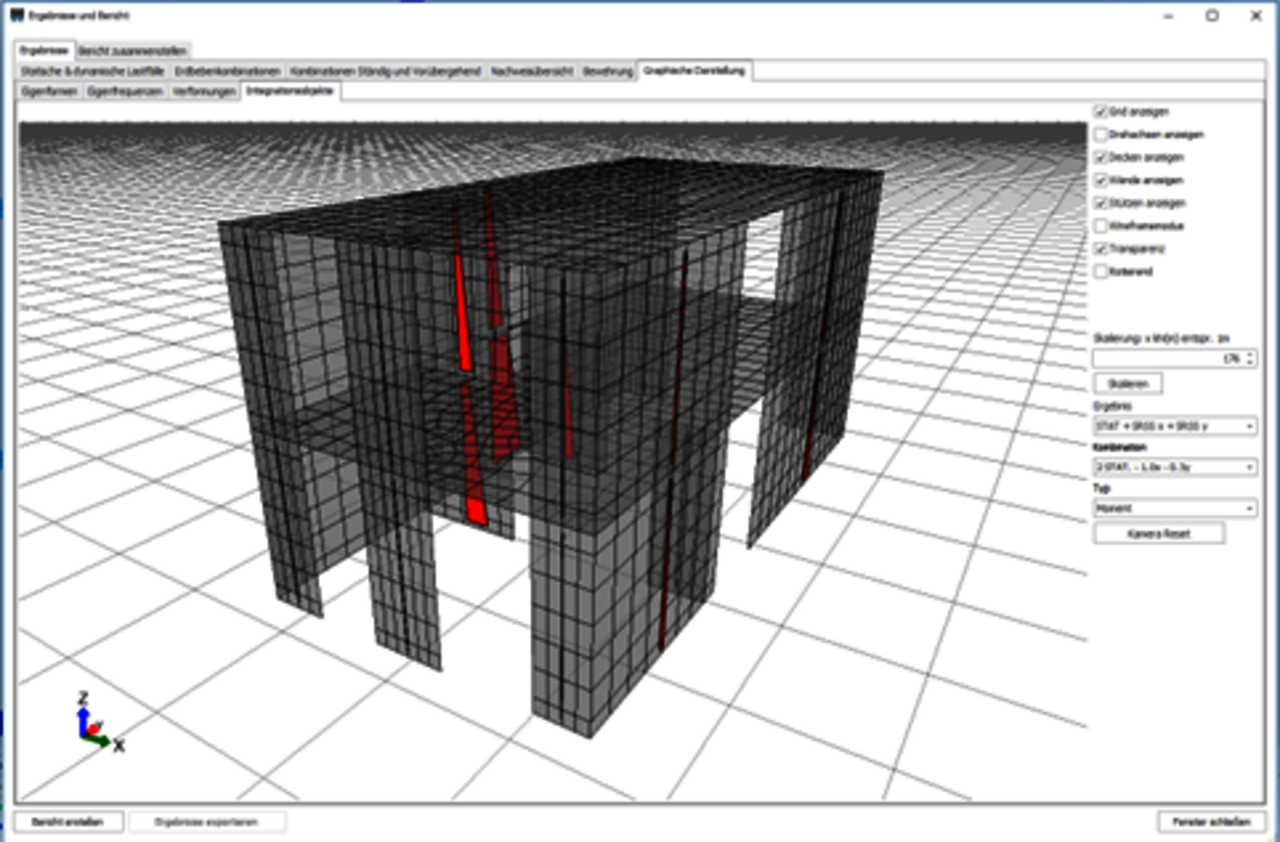Introduction of beams in MINEA
With the release of the new version of MINEA, beams are now available for linear 3D modeling with the verification module DIN EN 1998-1/NA-DE - DIN EN 1996-1-1/NA-DE (3D) [x64]. The beams are modeled in the form of 3D beam elements that are rigidly connected to the floor slab. Optionally, the beams can be mapped as a rectangular cross-section in combination with reinforced concrete as the material or by entering any cross-section and material properties. By default, the beams are modeled in the ceiling plane. It is also possible to define an eccentricity in relation to the slab centerline, which is taken into account accordingly in the FE calculation. Within the result and report output, the internal forces resulting in the different load cases are output along the axis of the downstand beams.
Announcement of Webinar: MINEA Nonlinear - Practical nonlinear verification of masonry structures
On the occasion of the publication of the non-linear verification module DIN EN 1998-1 - DIN EN 1996-1-1 - Pushover (2D) at the end of 2024, SDA-solutions GmbH offers a free webinar to introduce the newly innovative non-linear verification for masonry structures under seismic actions with the software MINEA Nonlinear. The webinar will take place on 09.04.2025 from 14:00-15:00.
Further information and the possibility to register can be found below the webinars.
MINEA Services - New service MINEA to InfoCAD
In addition to the MINEA software itself, services related to working with MINEA are now available and will be successively expanded. As a first service, MINEA to InfoCAD can be used to transfer a building model from MINEA to the InfoCAD program system.
Further information can be found below the Services.
Release of nonlinear verification module DIN EN 1998-1 - DIN EN 1996-1-1 - Pushover (2D)
With the new verification module DIN EN 1998-1 - DIN EN 1996-1-1 - Pushover (2D), the implementation of the non-linear static (pushover) calculation according to DIN EN 1998-1 section 4.3.3.4.2 is now available for 2D models within MINEA. This enables verification based on the capacity spectrum method using damped spectra for buildings with regular floor plans.
Consideration of the construction process of reinforced concrete columns in the verification of masonry walls
Within MINEA, it is now possible to take reinforced concrete columns into account in the wall design according to their design in the construction process. If, for example, the reinforced concrete columns are constructed in formwork blocks in each storey and decoupled from the vertical load transfer by appropriate measures (e.g. decoupling with polystyrene), it is now possible to take this into account when determining the internal forces and during the wall design. Decoupling the reinforced concrete columns from the vertical load transfer means, for example, that the static load cases and the resulting internal forces are determined on the system without reinforced concrete columns and the determination of the internal forces due to dynamic load cases (response spectrum method) is carried out on the overall system consisting of wall panels and reinforced concrete columns. When verifying the walls, the internal forces from the different load cases or systems are then combined. If necessary, the reinforced framing within the formwork blocks can also be taken into account in the shear force verification by using the entire wall length as the compressed length.
New approval database MeinZiegelhaus (07/2024)
A new approval database for MeinZiegelhaus products is now available below the download area. A complete list of the products included can be found below the approval databases.
Completely redesigned 3D module with new 64-bit based kernel
The new 3D calculation module is based on a brand new powerful 64-bit based kernel, which enables significantly faster calculation and modeling of larger 3D models. As part of the introduction of the new kernel, the limit of 100 walls/columns has been removed for three-dimensional modeling. In addition, the coupling mechanisms have been completely revised. These can now be defined separately for masonry and reinforced concrete walls to allow for different types of connections. In addition, a new column type has been introduced for modeling rigidly connected columns.
New features in MINEA Linear from 10/2022
New data interface BIM – SAF
The newly implemented data interface BIM-SAF (Structural Analysis Format) is a data format based on MS-Excel© for the smooth exchange of calculation models. With the BIM-SAF data interface, models can be efficiently imported from common BIM and calculation software for the structural verification in MINEA. MINEA is an ideal supplement to your design software and the input effort is reduced to a minimum.

Seismic actions according to DIN EN 1998-1/NA-2021
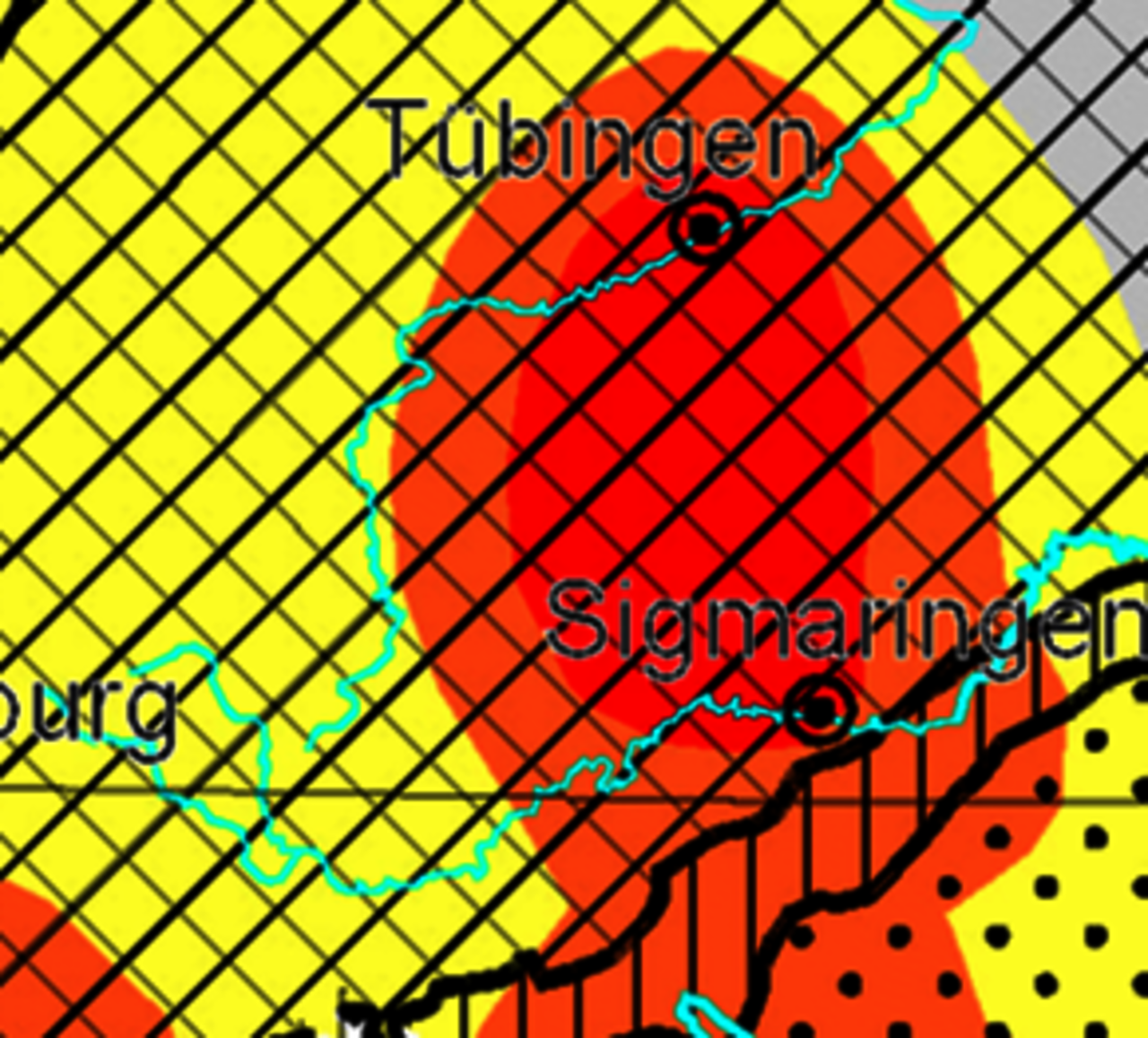
The earthquake hazard maps according to DIN EN 1998-1/NA-2021 have been integrated and the earthquake data for the building location can be determined interactively by entering the address data with OpenStreetMap©.
Wind loads according to DIN EN 1991-1-4/NA-2010
- The input of wind loads according to DIN EN 1991-1-4/NA-2010 is now supported by an interactive wind load database. The wind loads on common building shapes can be determined automatically.
- Consideration of inclinations and verification of effects according to second order structural theory
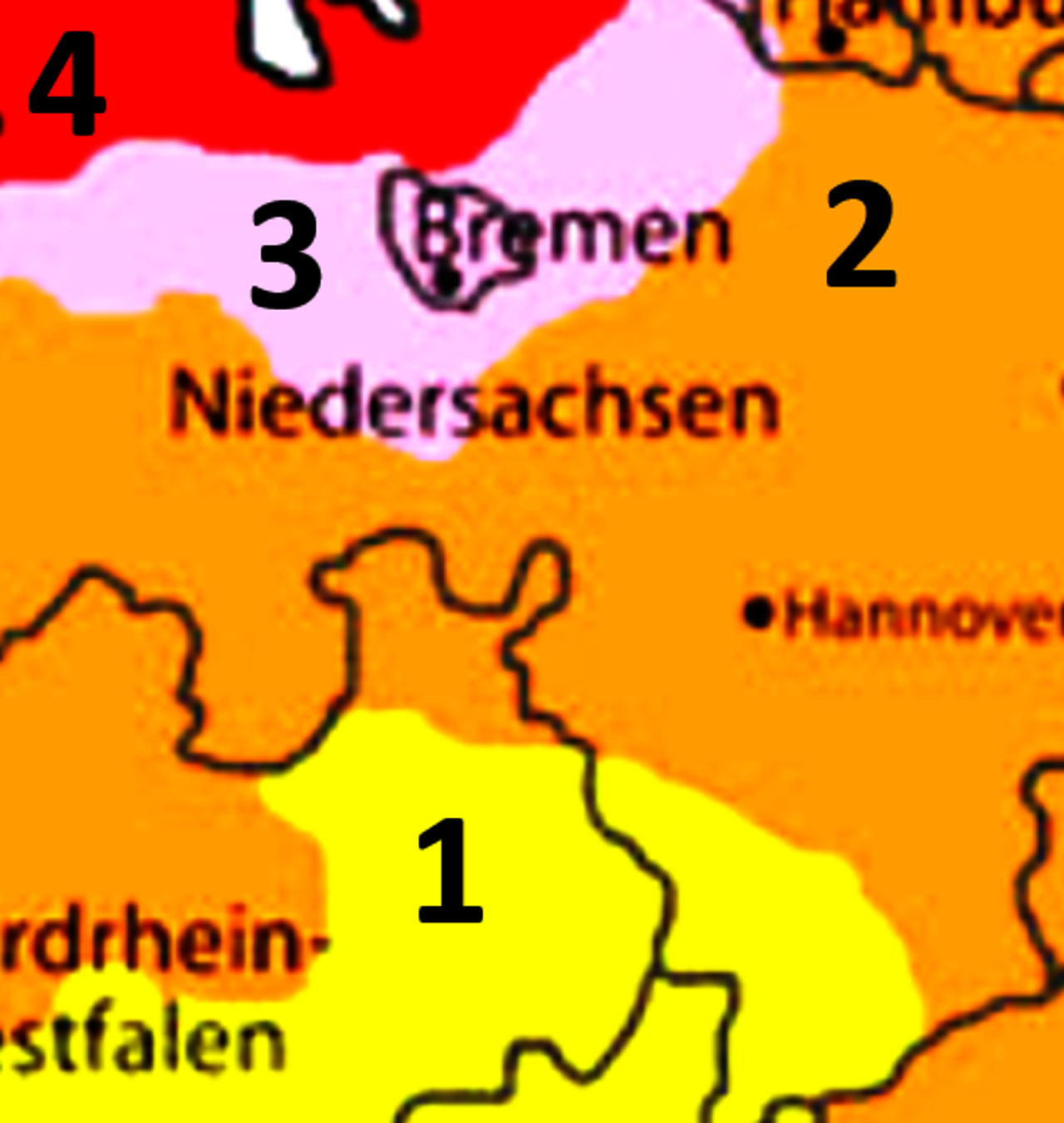
Linear verification modules according to DIN EN 1996-1-1/NA-2019
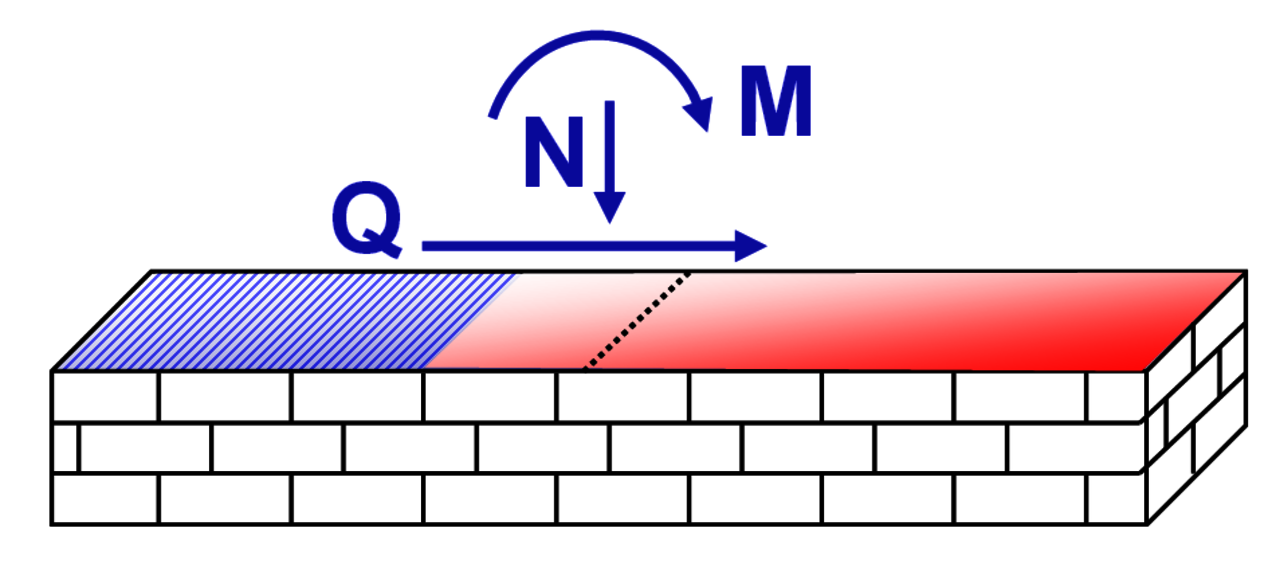
The extensive mathematical verification options for the current wind and earthquake effects are now available in the following verification modules.
- Computational verification with two-dimensional calculation models with automatic consideration of framing effects according to DIN EN 1996-1-1/NA-2019, Annex K
- Computational verification with three-dimensional calculation models.
Simplified structural verification according to DIN EN 1998-1/NA-2021
Simplified verification according to the design rules based on the new regulations for required shear wall areas.

Reinforced concrete design for slabs according to DIN EN 1992-1-1
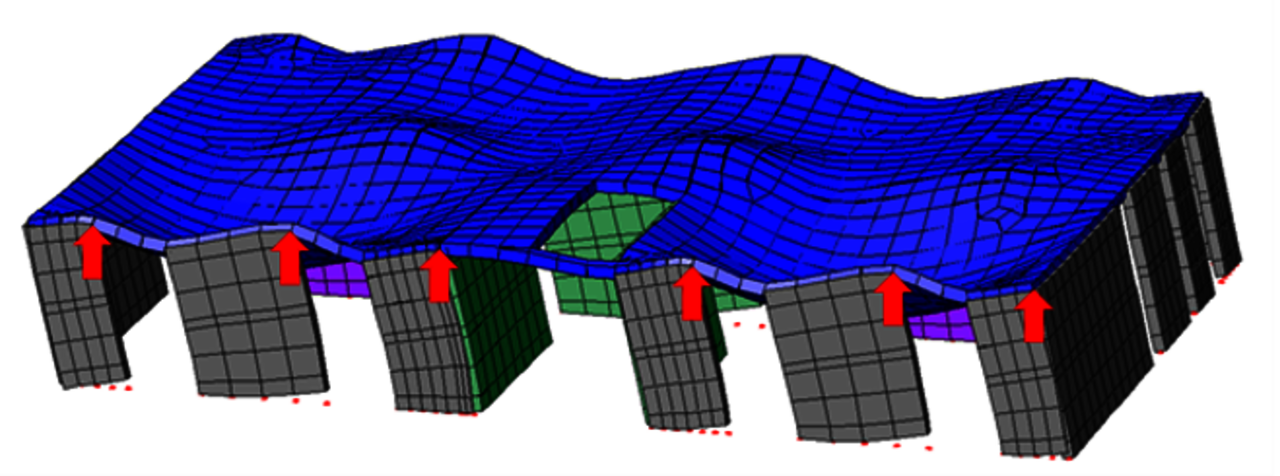
The slab design for the additional loads due to framing effects in 2D calculation models has been supplemented. For the additional bending and shear loads, the required reinforcement required is now checked with output in the automatically generated verifiable structural analysis.
New approval databases
With the new approval databases for DIN EN 1996, the latest products of the masonry industry are available. Please use the download offers of the approval databases on the MINEA homepage.

Application of higher behaviour factors according to DIN EN 1998-1/NA-2021
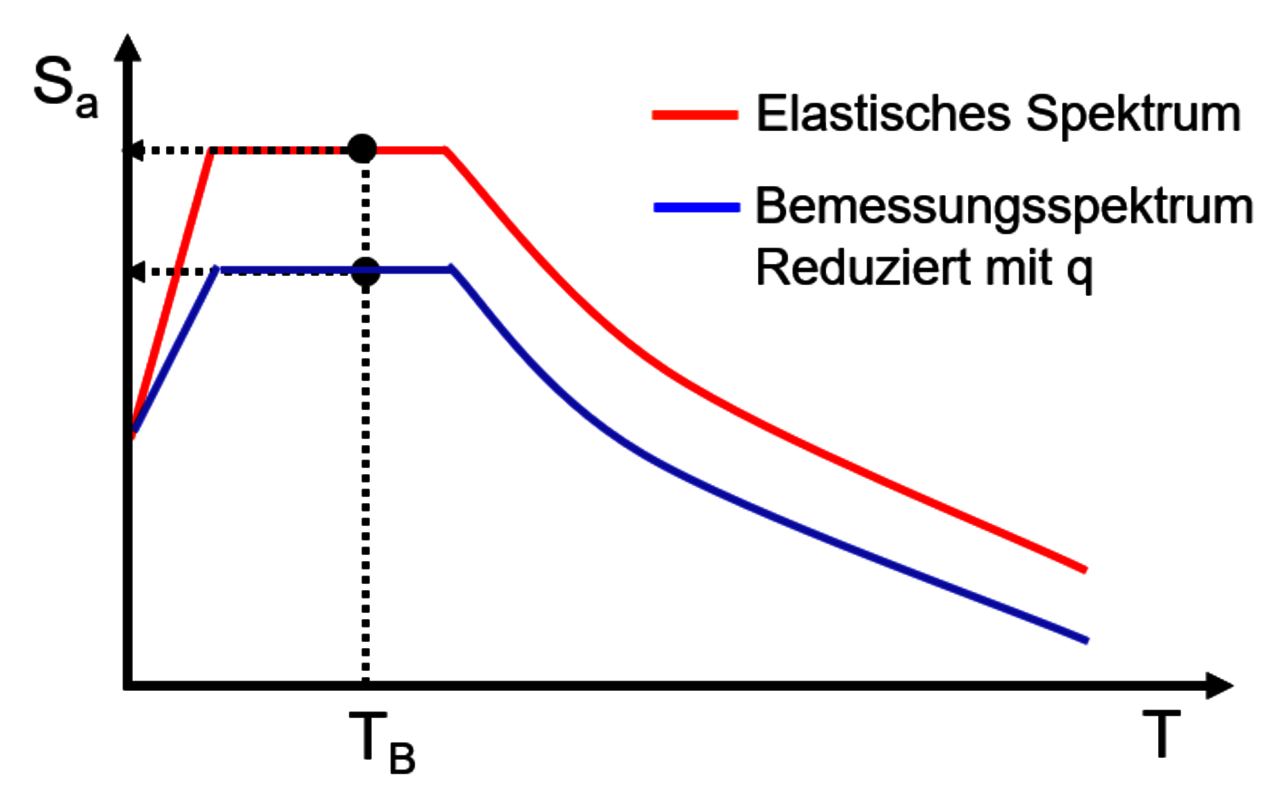
In the linear earthquake verification, the higher behaviour factors q according to DIN EN 1998-1/NA-2021 can now be applied. This results in significantly improved verification possibilities.



